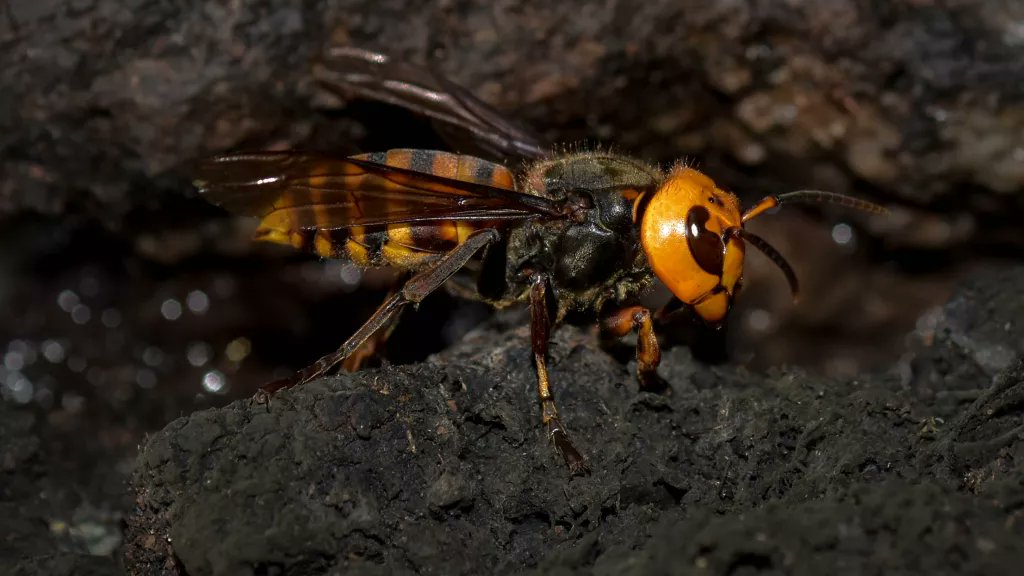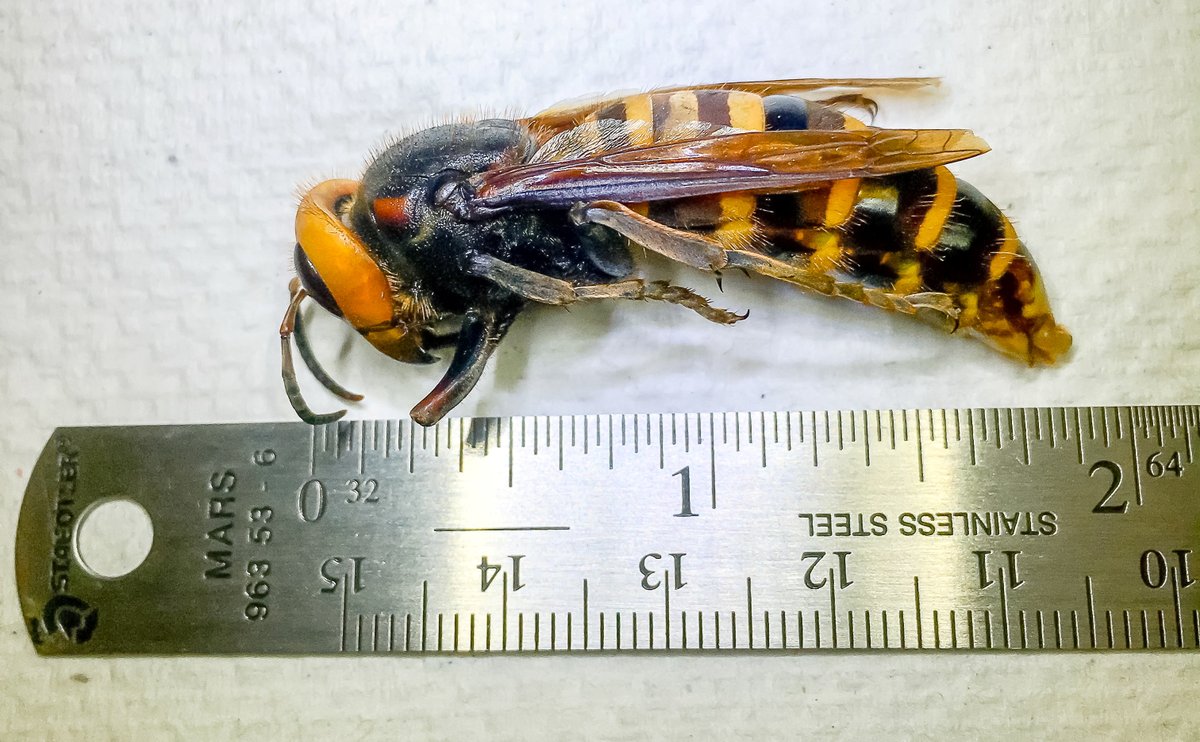#AnimalOfTheDay: Macaroni penguin 🐧
- Population size: 9 million breeding pairs (Vulnerable)
- Life span: 8-15 years
- Weight: 5,5 kg
- Height: 71 cm
- Distribution: (islands) between Antartica, South America & Africa
- Habitat: Rocky, water-bound terrain
- Diet: mostly krill


- Population size: 9 million breeding pairs (Vulnerable)
- Life span: 8-15 years
- Weight: 5,5 kg
- Height: 71 cm
- Distribution: (islands) between Antartica, South America & Africa
- Habitat: Rocky, water-bound terrain
- Diet: mostly krill


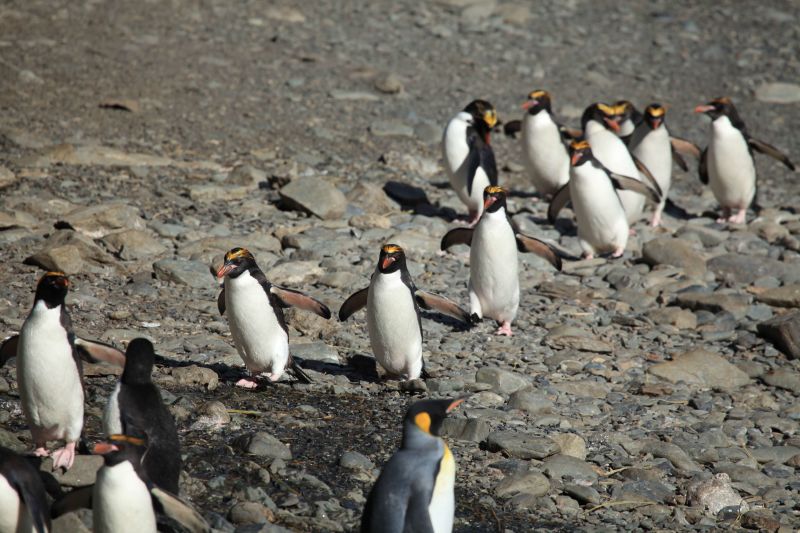
#AnimalOfTheDay: Philippine flying lemur
- Population size: 100.000
- Life span: 17,5 years
- Weight: 1 - 1,7 kg
- Length: 33-38 cm
- Distribution: Philippine islands
- Habitat: rain forest
- Diet: folivore that mainly eats flowers, buds & young leaves
- Reproduction: 1 young


- Population size: 100.000
- Life span: 17,5 years
- Weight: 1 - 1,7 kg
- Length: 33-38 cm
- Distribution: Philippine islands
- Habitat: rain forest
- Diet: folivore that mainly eats flowers, buds & young leaves
- Reproduction: 1 young
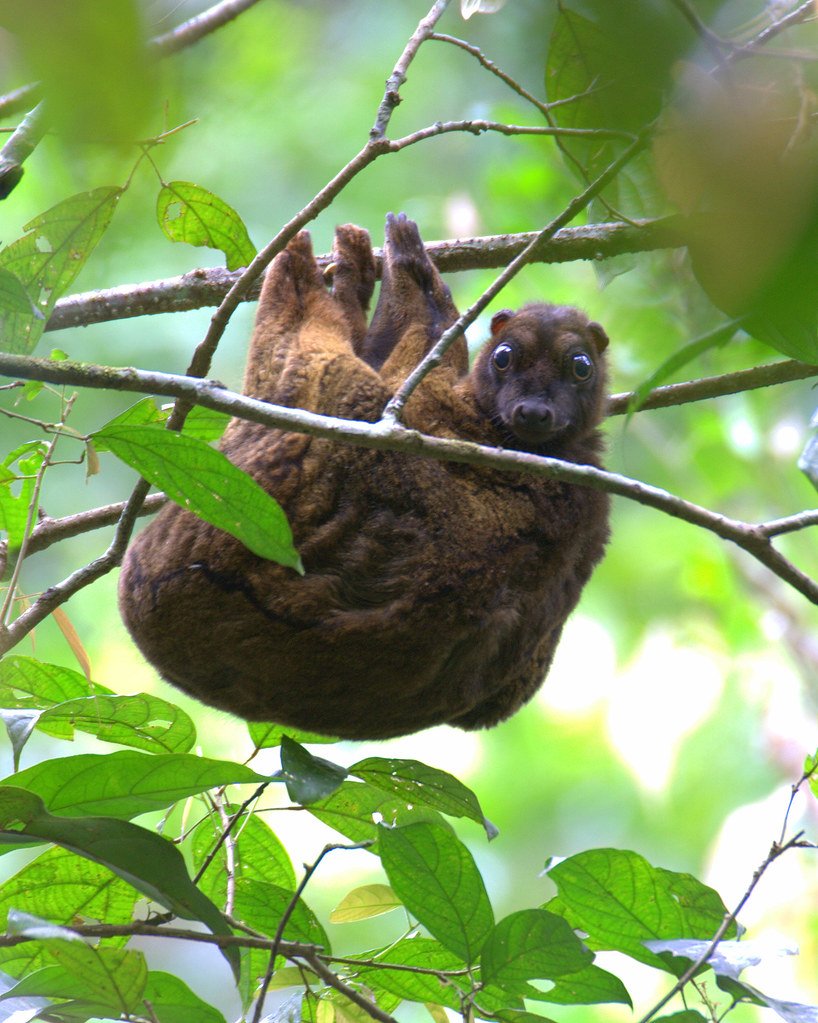


#AnimalOfTheDay: Tapanuli orangutan🦧(Pongo tapanuliensis)
- Population size: <800 (Critically endangered)
- Life span: 40 years
- Weight: 40-90 kg
- Height: 110-137 cm
- Distribution: Sumatra
- Habitat: (sub)tropical moist broadleaf forest
- Diet: omnivores
- # of offspring: 1


- Population size: <800 (Critically endangered)
- Life span: 40 years
- Weight: 40-90 kg
- Height: 110-137 cm
- Distribution: Sumatra
- Habitat: (sub)tropical moist broadleaf forest
- Diet: omnivores
- # of offspring: 1



#AnimalOfTheDay: Northern flicker
- Population size: 9,9 million
- Life span: 9 years
- Weight: 120 g
- Length: 35 cm
- Wing span: 54 cm
- Distribution: north & central America
- Habitat: woodlands, forest edges and open fields
- Diet: omnivore (mainly ants)
- Clutch size: 3-12



- Population size: 9,9 million
- Life span: 9 years
- Weight: 120 g
- Length: 35 cm
- Wing span: 54 cm
- Distribution: north & central America
- Habitat: woodlands, forest edges and open fields
- Diet: omnivore (mainly ants)
- Clutch size: 3-12




#AnimalOfTheDay: Tiger salamander
- Life span: 10-16 years
- Weight: 125 g
- Length: 18-36 cm
- Distribution: north & central America
- Habitat: near ponds, lakes, or slow-moving streams
- Diet: worms, insects, frogs & even other salamanders
- Clutch size: 100-1000 eggs


- Life span: 10-16 years
- Weight: 125 g
- Length: 18-36 cm
- Distribution: north & central America
- Habitat: near ponds, lakes, or slow-moving streams
- Diet: worms, insects, frogs & even other salamanders
- Clutch size: 100-1000 eggs



#AnimalOfTheDay: Harpy eagle
- Distribution: Central & South America
- Habitat: tropical lowland rainforests
- Population size: 20.000-50.000
- Life span: 25-35 years
- Weight: 5-9 kg
- Length: 89-109 cm
- Wingspan: 2m
- Diet: sloths, primates, birds, lizards, rodents and deer


- Distribution: Central & South America
- Habitat: tropical lowland rainforests
- Population size: 20.000-50.000
- Life span: 25-35 years
- Weight: 5-9 kg
- Length: 89-109 cm
- Wingspan: 2m
- Diet: sloths, primates, birds, lizards, rodents and deer



#AnimalOfTheDay: Cobalt blue tarantula
- Distribution: Southeast Asia
- Habitat: tropical rainforests
- Life span: 25 years
- Length: 13 cm
- Diet: crickets, cockroaches and other small insects
- Distribution: Southeast Asia
- Habitat: tropical rainforests
- Life span: 25 years
- Length: 13 cm
- Diet: crickets, cockroaches and other small insects

8) #AnimalOfTheDay: Bluefin tuna
- Distribution: Pacific Ocean
- Habitat: From cool to tropical waters up to 550m deep, ranging from 2-30°C
- Life span: 15 years
- Weight: 60 kg
- Length: 100-300 cm
- Diet: opportunistic carnivore
- Clutch size: 780.000 to 35 million eggs
- Distribution: Pacific Ocean
- Habitat: From cool to tropical waters up to 550m deep, ranging from 2-30°C
- Life span: 15 years
- Weight: 60 kg
- Length: 100-300 cm
- Diet: opportunistic carnivore
- Clutch size: 780.000 to 35 million eggs

9) #AnimalOfTheDay: Eurasian blue tit
- Habitat: Woodlands, parks & gardens
- Population size: 19-42 million pairs
- Life span: 3-11 years
- Weight: 11 gram
- Length: 12 cm
- Wingspan: 18 cm
- Diet: Insects, caterpillars, seeds & nuts
- Clutch size: 10-12 eggs



- Habitat: Woodlands, parks & gardens
- Population size: 19-42 million pairs
- Life span: 3-11 years
- Weight: 11 gram
- Length: 12 cm
- Wingspan: 18 cm
- Diet: Insects, caterpillars, seeds & nuts
- Clutch size: 10-12 eggs

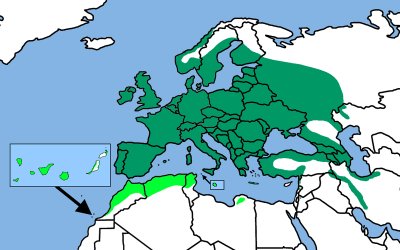


10) #AnimalOfTheDay: Honduran white bat🦇
- Distribution: Central America
- Habitat: Tropical rainforest
- Life span: 18 years
- Weight: 6 gram
- Length: 4-5 cm
- Wingspan: 10 cm
- Diet: herbivores (frugivores); almost exclusively figs, but also other fruits
- # of offspring: 1



- Distribution: Central America
- Habitat: Tropical rainforest
- Life span: 18 years
- Weight: 6 gram
- Length: 4-5 cm
- Wingspan: 10 cm
- Diet: herbivores (frugivores); almost exclusively figs, but also other fruits
- # of offspring: 1




11) #AnimalOfTheDay: Yellow-footed rock wallaby
- Distribution: Australia
- Habitat: semi-arid areas
- Population size: <5000 (Near threatened)
- Life span: 10 years
- Weight: 6-11 kg
- Length: 48-65 cm
- Diet: herbivore (leaves & grasses)
- # of offspring: 1 (called Joey)


- Distribution: Australia
- Habitat: semi-arid areas
- Population size: <5000 (Near threatened)
- Life span: 10 years
- Weight: 6-11 kg
- Length: 48-65 cm
- Diet: herbivore (leaves & grasses)
- # of offspring: 1 (called Joey)



12) #AnimalOfTheDay: Golden bamboo lemur
- Distribution: southeastern Madagascar
- Habitat: tropical rainforests
- Population size: 630 total, <250 mature individuals (Critically endangered)
- Weight: 1,3-1,7 kg
- Length: 75 cm
- Diet: 90% bamboo, bamboo grasses & bamboo foliage


- Distribution: southeastern Madagascar
- Habitat: tropical rainforests
- Population size: 630 total, <250 mature individuals (Critically endangered)
- Weight: 1,3-1,7 kg
- Length: 75 cm
- Diet: 90% bamboo, bamboo grasses & bamboo foliage



13) #AnimalOfTheDay: Wonderpus photogenicus 🐙
- Distribution: Shallow waters of Indo-Malayan Archipelago
- Habitat: Coastal waters
- body Length: 2-5 cm
- Arm span: 30-45 cm
- Diet: Small crustaceans and fishes


- Distribution: Shallow waters of Indo-Malayan Archipelago
- Habitat: Coastal waters
- body Length: 2-5 cm
- Arm span: 30-45 cm
- Diet: Small crustaceans and fishes
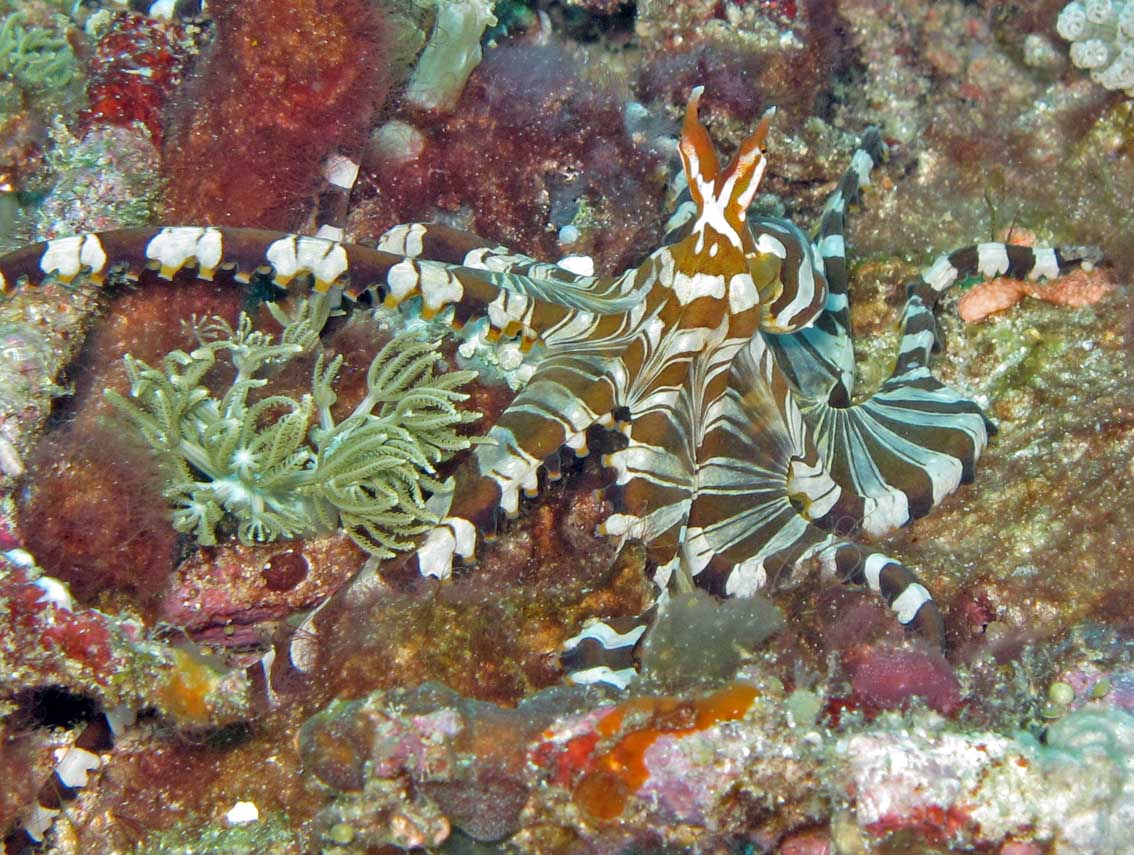


14) #AnimalOfTheDay: Brush-tailed phascogale
- Distribution: Australia
- Habitat: open, dry schlerophyll forest
- IUCN status: Near Threatened (NT)
- Life span: 1-3 years
- Weight: 110-310 gram
- Length: 16-27 cm
- Diet: mammals, birds, reptiles, insects, spiders & centipedes



- Distribution: Australia
- Habitat: open, dry schlerophyll forest
- IUCN status: Near Threatened (NT)
- Life span: 1-3 years
- Weight: 110-310 gram
- Length: 16-27 cm
- Diet: mammals, birds, reptiles, insects, spiders & centipedes




15) #AnimalOfTheDay: Lowland anoa
- Distribution: Sulawesi
- Habitat: Lowland moist forests and wetlands
- IUCN status: <2500 individuals, Near Threatened (NT)
- Life span: 20 years
- Weight: 90-250 kg
- Length: 180 cm
- Diet: grasses, aquatic plants, ferns, fruit, palm & vinger


- Distribution: Sulawesi
- Habitat: Lowland moist forests and wetlands
- IUCN status: <2500 individuals, Near Threatened (NT)
- Life span: 20 years
- Weight: 90-250 kg
- Length: 180 cm
- Diet: grasses, aquatic plants, ferns, fruit, palm & vinger



16) #AnimalOfTheDay: Red-cockaded woodpecker
- Distribution: southeastern USA
- Habitat: pine forest
- Population size: 19.000 individuals
- Life span: 12-16 years
- Weight: 45-50 gram
- Length: 20-23 cm
- Wingspan: 35-38 cm
- Diet: insectivores
- Clutch size: 1-5 eggs



- Distribution: southeastern USA
- Habitat: pine forest
- Population size: 19.000 individuals
- Life span: 12-16 years
- Weight: 45-50 gram
- Length: 20-23 cm
- Wingspan: 35-38 cm
- Diet: insectivores
- Clutch size: 1-5 eggs




17) #AnimalOfTheDay: Asian golden cat
- Distribution: southwestern Asia
- Habitat: deciduous, tropical & subtropical rainforests
- IUCN status: Near Threatened
- Life span: 17-23 years in captivity
- Weight: 8-15 kg
- Length: 110-160 cm
- Diet: opportunistic; various small prey


- Distribution: southwestern Asia
- Habitat: deciduous, tropical & subtropical rainforests
- IUCN status: Near Threatened
- Life span: 17-23 years in captivity
- Weight: 8-15 kg
- Length: 110-160 cm
- Diet: opportunistic; various small prey



18) #AnimalOfTheDay: keel-billed toucan
- Distribution: Central America
- Habitat: (sub)tropical rainforests.
- Population size: 50K-500K individuals
- Weight: 400 gram
- Length: 52 cm
- Diet: mostly fruits, but also seeds, insects, invertebrates, lizards
- Clutch size: 2-4 eggs


- Distribution: Central America
- Habitat: (sub)tropical rainforests.
- Population size: 50K-500K individuals
- Weight: 400 gram
- Length: 52 cm
- Diet: mostly fruits, but also seeds, insects, invertebrates, lizards
- Clutch size: 2-4 eggs

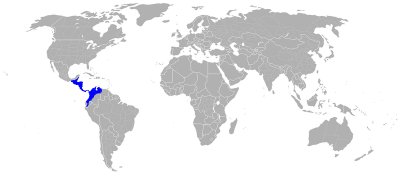

19) #AnimalOfTheDay: Golden jackal
- Distribution: from eastern Europe to south Asia
- Habitat: dry open country, arid short grasslands & steppe
- IUCN status: Least Concern
- Life span: 8-16 years
- Weight: 8-15 kg
- Length: 95-110 cm
- Diet: opportunistic omnivores



- Distribution: from eastern Europe to south Asia
- Habitat: dry open country, arid short grasslands & steppe
- IUCN status: Least Concern
- Life span: 8-16 years
- Weight: 8-15 kg
- Length: 95-110 cm
- Diet: opportunistic omnivores




20) #AnimalOfTheDay: Dibbler
- Distribution: south-western Australia
- Habitat: dunal scrubland & succulent heath
- IUCN status: Endangered; 700 individuals
- Life span: 1-3 years
- Weight: 40-100 gram
- Length: ~14,5 cm
- Diet: primarily insectivorous, 20% plant material


- Distribution: south-western Australia
- Habitat: dunal scrubland & succulent heath
- IUCN status: Endangered; 700 individuals
- Life span: 1-3 years
- Weight: 40-100 gram
- Length: ~14,5 cm
- Diet: primarily insectivorous, 20% plant material



21) #AnimalOfTheDay: Northern alligator lizard
- Distribution: western USA
- Habitat: forested habitats
- Life span: 5-8 years
- Length: 27,5 cm
- Diet: carnivores; mostly insectivores
- Reproduction: viviparous; they give birth up to 15 live young



- Distribution: western USA
- Habitat: forested habitats
- Life span: 5-8 years
- Length: 27,5 cm
- Diet: carnivores; mostly insectivores
- Reproduction: viviparous; they give birth up to 15 live young




22) #AnimalOfTheDay: American hog-nosed skunk
- Distribution: Central & North America
- Habitat: wide range of habitats; foothills, grasslands, mountains & bushy areas
- Life span: 3-4 years
- Length: 45-90 cm
- Weight: 1-4,5 kg
- Diet: omnivores; animals, fruit & plants

- Distribution: Central & North America
- Habitat: wide range of habitats; foothills, grasslands, mountains & bushy areas
- Life span: 3-4 years
- Length: 45-90 cm
- Weight: 1-4,5 kg
- Diet: omnivores; animals, fruit & plants


23) #AnimalOfTheDay: Ribbon seal
- Distribution: northern Pacific & southern Arctic Ocean
- Habitat: icy waters, up to 600m deep
- Population size: 183.000
- Life span: 20-30 years
- Length: 165-175 cm
- Weight: 72-90 kg
- Diet: squid, fish & crustaceans
- Litter size: 1 young


- Distribution: northern Pacific & southern Arctic Ocean
- Habitat: icy waters, up to 600m deep
- Population size: 183.000
- Life span: 20-30 years
- Length: 165-175 cm
- Weight: 72-90 kg
- Diet: squid, fish & crustaceans
- Litter size: 1 young



24) #AnimalOfTheDay: Portugese man-of-war
- Distribution: Atlantic, Pacific Ocean, Indian Ocean & Caribbean sea
- Habitat: surface of tropical, marine waters
- Life span: 1 year
- Length: 15 cm with tentacles reaching 50 meters
- Diet: mostly fish and also crustaceans


- Distribution: Atlantic, Pacific Ocean, Indian Ocean & Caribbean sea
- Habitat: surface of tropical, marine waters
- Life span: 1 year
- Length: 15 cm with tentacles reaching 50 meters
- Diet: mostly fish and also crustaceans



25) #AnimalOfTheDay: Emperor scorpion
- Distribution: West Africa
- Habitat: Tropical forest
- Life span: 5-8 years (in captivity)
- Length: 20 cm
- Weight: 28 gram
- Diet: Insects & other arthropods
- Reprodiction: They give live birth to 10-12 young
- Sexual maturity: 4 years
- Distribution: West Africa
- Habitat: Tropical forest
- Life span: 5-8 years (in captivity)
- Length: 20 cm
- Weight: 28 gram
- Diet: Insects & other arthropods
- Reprodiction: They give live birth to 10-12 young
- Sexual maturity: 4 years

26) #AnimalOfTheDay: Northern gannet
- Distribution: Atlantic ocean & Mediterranean Sea
- Habitat: Coastal, marine waters
- Population size: 1,5-1,8 million individuals
- Life span: 21 years
- Weight: 2,5-3,6 kg
- Length: 93-110 cm
- Wing span: 170-180 cm
- Diet: fish, mollusks



- Distribution: Atlantic ocean & Mediterranean Sea
- Habitat: Coastal, marine waters
- Population size: 1,5-1,8 million individuals
- Life span: 21 years
- Weight: 2,5-3,6 kg
- Length: 93-110 cm
- Wing span: 170-180 cm
- Diet: fish, mollusks




27) #AnimalOfTheDay: Southern hog-nosed snake
- Distribution: southeastern United States
- Habitat: sandy areas, dry river floodplains, fields & wire grass flatwoods
- Length: 33-61 cm
- Weight: 46-120 gram
- Diet: toads, lizards, frogs & small vertebrates
- Non-venomous



- Distribution: southeastern United States
- Habitat: sandy areas, dry river floodplains, fields & wire grass flatwoods
- Length: 33-61 cm
- Weight: 46-120 gram
- Diet: toads, lizards, frogs & small vertebrates
- Non-venomous




28) #AnimalOfTheDay: Barn owl
- Distribution: every continent except Antarctica
- Habitat: range of habitats from rural to urban
- Population size: 4-10 million
- Life span: up to 34 years
- Weight: 430-620 g
- Length: 32-40 cm
- Wing span: 110 cm
- Diet: small mammals like mice



- Distribution: every continent except Antarctica
- Habitat: range of habitats from rural to urban
- Population size: 4-10 million
- Life span: up to 34 years
- Weight: 430-620 g
- Length: 32-40 cm
- Wing span: 110 cm
- Diet: small mammals like mice




29) #AnimalOfTheDay: Blue whale
- Distribution: all oceans of the world
- Habitat: open ocean
- Population size: 5.000-15.000
- Life span: 80-90 years
- Weight: 190.000 kg
- Length: up to 33,5 m
- Diet: up to 3-4 tons of krill per day
- Reproduction: 1 young every 2/3 years



- Distribution: all oceans of the world
- Habitat: open ocean
- Population size: 5.000-15.000
- Life span: 80-90 years
- Weight: 190.000 kg
- Length: up to 33,5 m
- Diet: up to 3-4 tons of krill per day
- Reproduction: 1 young every 2/3 years

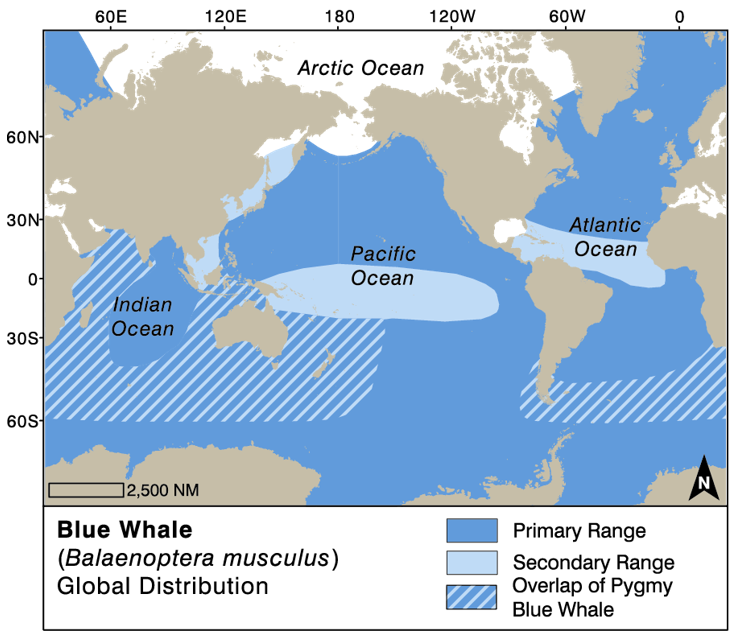


30) #AnimalOfTheDay: Patagonian mara
- Distribution: Argentina
- Habitat: open grasslands and shrubland steppes
- Life span: 14 years (in captivity)
- Weight: 8 kg
- Length: 61-81 cm
- Diet: herbivores (folivores), 70% grasses
- Number of offspring: 1-3 young



- Distribution: Argentina
- Habitat: open grasslands and shrubland steppes
- Life span: 14 years (in captivity)
- Weight: 8 kg
- Length: 61-81 cm
- Diet: herbivores (folivores), 70% grasses
- Number of offspring: 1-3 young




31) #AnimalOfTheDay: Black & white tegu
- Distribution: eastern & central South America
- Habitat: tropical rain forests, woodlands, savannas & semi-deserts
- Life span: 15-20 years
- Weight: up to 22 kg
- Length: 92-140 cm
- Diet: Omnivores
- # of offspring: 30 after 40-60 days



- Distribution: eastern & central South America
- Habitat: tropical rain forests, woodlands, savannas & semi-deserts
- Life span: 15-20 years
- Weight: up to 22 kg
- Length: 92-140 cm
- Diet: Omnivores
- # of offspring: 30 after 40-60 days


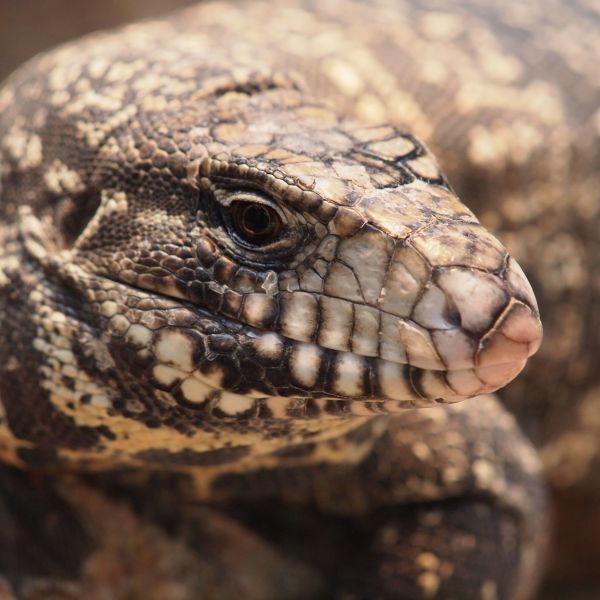

• • •
Missing some Tweet in this thread? You can try to
force a refresh





